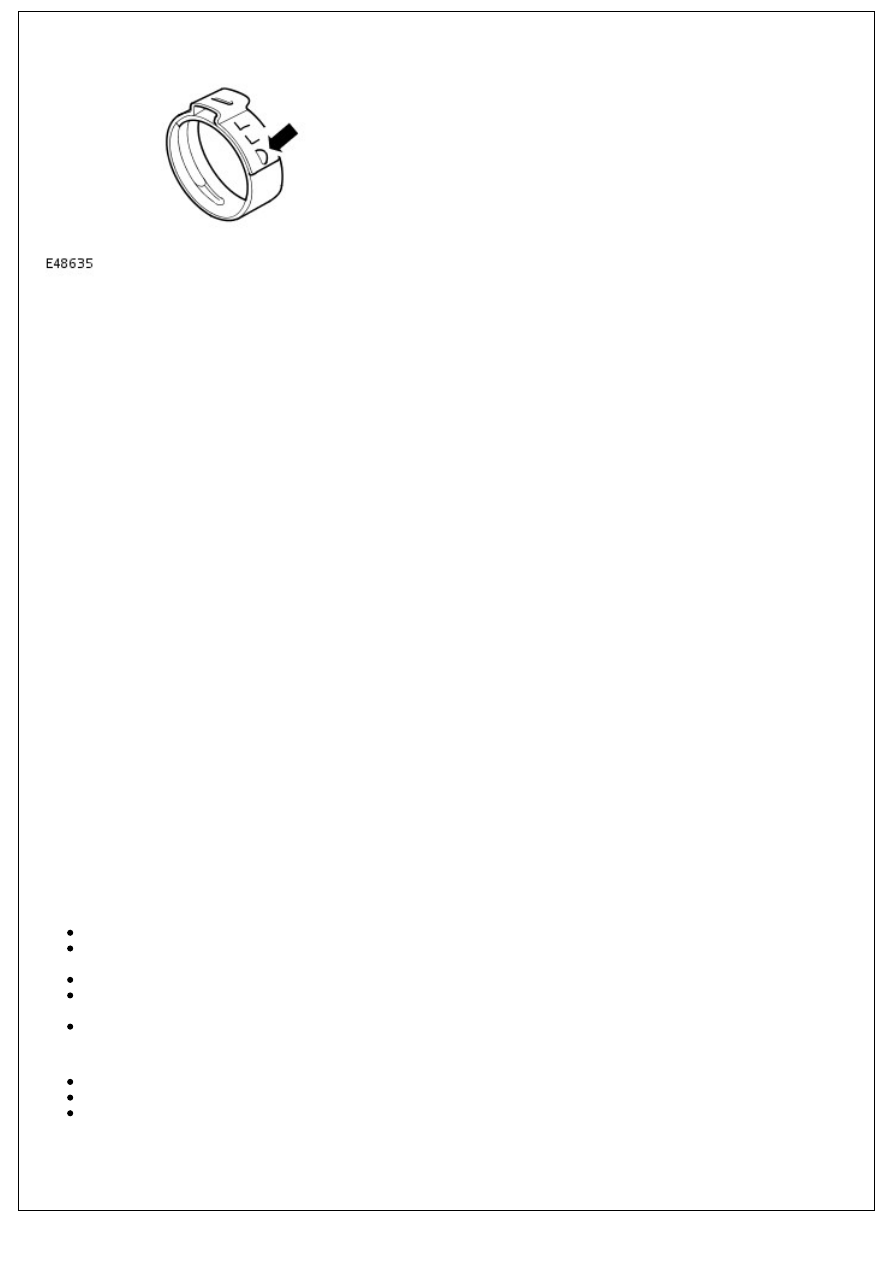Defender. Manual - part 4

Oetiker clips may be removed by bending the tag (arrowed) and releasing the free end of the clip. Clips must not be re-
used. When installing new clips, make sure clip is positioned on hose before tightening and make sure that when clip is
tightened, the tag is located in the longitudinal slot in the free end of the clip (arrowed in illustration).
'Quick-fit' connections are also installed to certain hoses/pipes. Inspect 'quick-fit' connections for damage, prior to
connection. Replace if damaged. After engagement of 'quick-fit' connections, perform a 'tug' test to make sure
connection is securely installed.
Heat protection
Always make sure that heat shields and protective sheathing are in good condition; replace if damage is evident.
Particular care must be taken when routing hoses close to hot engine components such as the exhaust manifolds and
exhaust gas recirculation (EGR) pipes. Hoses will relax and deflect slightly when hot, make sure this movement is taken
into account when routing and securing hoses.
Electrical Precautions
General
The following guidelines are intended to make sure the safety of the operator whilst preventing damage to the electrical
and electronic components of this vehicle.
Equipment
Prior to commencing any test procedure on the vehicle, make sure that the relevant test equipment is working correctly
and that any harness or connectors are in good condition. It is particularly important to check the condition of all plugs
and leads of mains operated equipment.
Polarity
Never reverse connect the vehicle battery and always make sure the correct polarity when connecting test equipment.
High voltage circuits
Whenever disconnecting live ht circuits, always use insulated pliers and never allow the open end of the ht lead to
contact other components, particularly ECU's.
Connectors and harnesses
The engine compartment of a vehicle is a particularly hostile environment for electrical components and connectors.
Always observe the following:
Make sure electrically related items are dry and oil free before disconnecting/connecting test equipment.
Make sure that disconnected multiplugs and sensors are protected from any possible oil, coolant or other liquid
contamination. Any such contamination could impair performance or lead to component failure.
Never force connectors apart or pull on the wiring harness.
Always make sure locking tabs are disengaged before disconnecting multiplugs etc. and make sure that correct
orientation is achieved before connection.
Make sure that any protection covers, insulation etc. are replaced if disturbed.
Having confirmed that a component is faulty, carry out th following:
Switch off the ignition and disconnect the battery.
Remove the component and support the disconnected harness.
When replacing electrical components, keep oily hands away from electrical connections and make sure that
locking tabs on connectors are fully engaged.
Battery Disconnection/Connection
Always refer to the Electrical Section of this manual - Battery Connection/Disconnection prior to attempting to connect